
Neurosage, maximizing the power and potential of the human brain.
Heal the Brain with a Game?
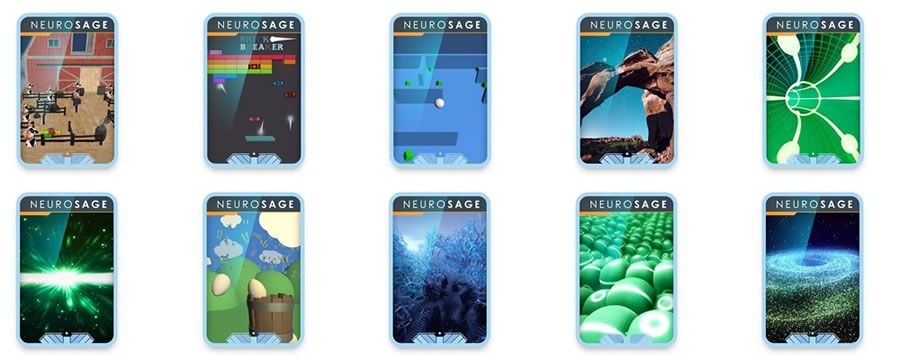
Playing video games has become a very popular form of entertainment. Research recognizes many positive effects gaming has on different areas of the brain. It has been shown to activate areas in the brain that deal with memory, visual imagery, and cognitive control.
Neurosage is a noninvasive computer software application that is designed to improve balance and coordination. Light and sound stimulate the brain and has been used for years for their therapeutic benefits. Different frequencies of light and sound produce different effects. For example, alpha range visual and auditory stimulation reduces the perception of pain. Other frequencies induce a parasympathetic or relaxed state. This process is named Systemic Neural Adaptation, which involves the intentional change of the body’s system over time.
What is Neurosage Therapy?

These specially designed NeuroSage programs are more than just games—they're therapeutic tools that offer a spectrum of benefits. They effectively reduce pain, enhance balance and coordination, boost muscle strength, and expand range of motion.
NeuroSage games and programs are designed not only for therapeutic purposes but also to be engaging and enjoyable. They often incorporate elements that make the experience fun and interactive:
Engaging Challenges: The games offer cognitive challenges and puzzles that are entertaining and stimulating. They can be designed as quests, puzzles, or interactive activities that keep users engaged.
Interactive Features: Incorporating interactive elements encourages participation and makes the activities more enjoyable. Users often have to respond or engage with the program, creating a sense of involvement.
Game-Like Design: Many programs are structured like games, with levels, achievements, or rewards, making the therapy feel more like a fun activity rather than a typical treatment.
Variety and Diversity: Offering a range of games and activities ensures there's something for everyone. This variety keeps the experience fresh and interesting.
Neurosage for Kids?

Absolutely, NeuroSage Therapy isn't just for adults—it's an amazing tool for kids too, especially those dealing with learning disabilities, ADHD, or behavioral issues.
Learning Superpowers: For kids with learning disabilities, NeuroSage Therapy acts like a superhero tutor. It helps them focus better, remember things, and solve problems, making learning feel like a breeze.
Calming the Storm: ADHD and behavioral issues can be tough, but NeuroSage Therapy is like a calm superhero. It helps kids manage their energy better, focus their attention, and control impulses.
The Coolest Coach: Think of it as a coach that helps kids become champions in their own lives. It improves coordination, balance, and even boosts confidence, making kids feel awesome in everything they do.
Growing Brain Muscles: Just like it does for grown-ups, NeuroSage Therapy's exercises grow strong brain muscles for kids too! Dr. Starkman's special plans are like a fun brain gym, making their minds sharper over time.
So, NeuroSage Therapy isn't just a game—it's like a full package of superpowers for kids. It's all about showing that their brains have tons of potential to grow and be awesome, just like how regular workouts make muscles stronger. Consistency and a personalized approach work wonders, helping kids feel better, learn better, and do better in everything they set their minds to!
How can Neurosage Therapy help me?

NeuroSage Therapy offers a range of potential benefits tailored to individual needs:
Cognitive Enhancement: It can boost memory, focus, and problem-solving skills, improving overall cognitive abilities.
Pain Management: NeuroSage Therapy may reduce chronic and acute pain perception, offering relief from various pain conditions.
Improved Coordination: It aids in enhancing balance, coordination, and motor skills, benefiting daily activities and sports performance.
Stress Reduction: The therapy includes relaxation techniques that can lower stress levels and promote a calmer mind.
Enhanced Physical Abilities: By improving muscle strength, speed, and agility, it can optimize physical performance.
Rehabilitation Support: It assists in the recovery process for neurological conditions or injuries, aiding in rehabilitation and recovery.
Emotional Well-being: It may help in managing mood-related issues by fostering a more positive mental state.
These benefits are achievable through personalized treatment plans crafted to address individual goals and needs. The therapy's holistic approach aims to enhance both physical and cognitive well-being, supporting overall health and quality of life.
Benefits of Neurosage:
Balance & Coordination
Flexibility & Range of motion
Cognition & Memory/Focus
Muscle Strength & Endurance
Pain & Discomfort relief
Improved Reaction Times
- Faster Recovery
Frequently Asked Questions
NeuroSage Therapy shows promise in assisting with various conditions and symptoms, potentially providing relief or improvement in:
Attention Deficit Hyperactivity Disorder (ADHD) and ADD: It may aid in improving attention span and focus.
Anxiety and Depression: The therapy may contribute to reducing stress levels and promoting a more positive mental state.
Chronic Pain Disorders (e.g., Fibromyalgia): It could assist in altering pain perception, potentially offering relief from chronic pain conditions.
Headaches and Migraines: NeuroSage Therapy might help in managing symptoms and reducing the frequency or severity of headaches and migraines.
Neurological Disorders: It can aid in rehabilitation and improvement of motor skills and cognitive functions in various neurological conditions.
Parkinson’s Disease Symptoms: It may assist in managing symptoms related to movement and cognitive function in Parkinson's disease.
Autism: While not a cure, it might assist in managing certain sensory and cognitive aspects associated with autism.
Traumatic Brain Injury (TBI) and Concussions: NeuroSage Therapy can aid in the rehabilitation process, potentially improving cognitive and motor functions.
Stroke Rehabilitation: It could assist in the recovery process by improving motor skills and cognitive functions affected by a stroke.
Post-Traumatic Stress Disorder (PTSD): It might contribute to stress reduction and emotional regulation in PTSD.
Phantom Limb Disorder: While research is ongoing, sensory stimulation in NeuroSage Therapy could potentially help manage phantom limb sensations.
Speech Disorders: It might aid in cognitive and sensory stimulation, potentially assisting in speech improvement.
Loss of Balance and Motor Control: NeuroSage Therapy may improve coordination and balance, benefiting individuals with motor control issues.
Pain Management: It shows potential in managing various pain conditions, aiding in pain perception alteration and relief.
While NeuroSage Therapy shows promise in these areas, its effectiveness may vary from person to person. Consulting with Dr. Starkman will determine its suitability and will create personalized treatment plan for your specific condition or symptom(s).
NeuroSage Therapy sessions vary in duration based on the purpose and stage of treatment:
Initial Exam: For newcomers, the Initial Exam is required to assess health history, conduct clinical examinations, and understand individual goals. This comprehensive evaluation takes approximately one hour. During this time, the therapist identifies the most suitable program to address specific needs.
Regular Therapy Sessions: Once the Initial Exam is completed and the appropriate program is determined, regular NeuroSage Therapy sessions typically range between 10 to 30 minutes. These sessions focus on engaging in targeted exercises or activities tailored to individual requirements.
The duration of each session may vary depending on the individual's age, progress, specific treatment goals, and doctor recommendations.
This therapy can be used for both children and adults. We have seen great strides in kid specific conditions and behaviors. Some of our parents in the practice have even expressed that their kids’ grades have improved and pre-and post-test scores went up.
Set-Up: The therapist/doctor will guide you through the setup process, which may involve putting on headphones, adjusting the vibe plate or other equipment, and ensuring you're ready for the session.
Engagement with Programs: You'll engage with the prescribed NeuroSage program. This could involve visual exercises demonstrated by staff, auditory stimulations through headphones, using the vibe plate or other tools as directed.
Guidance and Support: Throughout the session, the therapist might offer guidance, instructions, or encouragement to help you perform the exercises correctly and get the most out of the session.
Monitoring and Adjustment: The therapist may monitor your progress, observing your responses to the exercises. They might adjust settings or activities based on your comfort level or to optimize the session's effectiveness.

The Vibe Plate
The Vibe Plate used in NeuroSage Therapy is a vibrating platform designed to deliver controlled vibrations to the body. It's a tool incorporated into the therapy sessions to provide sensory stimulation and physical benefits. Here's a breakdown of its role:
Sensory Stimulation: The Vibe Plate emits gentle vibrations that stimulate the body's sensory receptors, providing a unique sensory experience. This sensory input can be soothing and calming for some individuals.
Muscle Activation: The controlled vibrations of the plate help activate muscles throughout the body. This activation can aid in muscle relaxation, improved circulation, and even in the activation of muscle groups not typically engaged during regular activities.
Improved Circulation: The vibrations promote blood flow, potentially enhancing circulation. Improved circulation can have various health benefits, including aiding in recovery, reducing muscle soreness, and potentially assisting in pain management.
Enhanced Physical Function: Regular use of the Vibe Plate, as part of NeuroSage Therapy, aims to enhance physical capabilities such as balance, coordination, and muscle strength. It may contribute to improving mobility and overall physical performance.
Complementary to Therapy: When used in combination with other elements of NeuroSage Therapy, the Vibe Plate adds another dimension to sensory stimulation, potentially augmenting the overall therapeutic effect of the session.
The Vibe Plate is often utilized under the guidance of a therapist, who can customize its use to suit individual needs and conditions. Its incorporation into NeuroSage Therapy is aimed at providing a comprehensive and holistic approach to enhancing both physical and sensory experiences during the sessions.
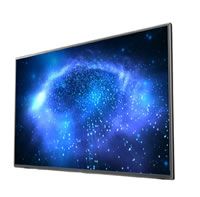
The Visuals
Visual Stimulation: The videos offer visual exercises and guided imagery designed to engage specific areas of the brain. These visuals can include calming scenes, stimulating patterns, or interactive activities that target various cognitive functions.
Guided Exercises: The videos often contain guided exercises or activities aimed at improving focus, attention, memory, and problem-solving skills. These exercises challenge the brain, promoting neuroplasticity—the brain's ability to rewire and adapt.
Neurological Engagement: Specific frequencies, colors, and patterns used in the videos are designed to stimulate neurological responses. They may activate certain brain regions associated with different functions, aiding in cognitive enhancement.
Relaxation and Stress Reduction: Some videos are tailored to induce relaxation, incorporating calming visuals and soothing sounds. They help in reducing stress levels, promoting a relaxed state of mind, and fostering a positive emotional environment.
Customized Programs: Videos are often part of customized programs, allowing therapists to tailor the content to address specific cognitive goals or challenges of each individual.
Feedback and Progress Monitoring: Therapists use videos as tools to monitor progress. Observing how individuals respond or engage with specific visual stimuli helps in assessing cognitive improvements over time.
In essence, the videos in NeuroSage Therapy serve as dynamic tools that engage the brain through visual stimuli, offering a wide range of exercises and activities designed to enhance cognitive abilities, reduce stress, and contribute to overall mental well-being. Therapists use these videos as part of a comprehensive approach to create personalized and effective treatment plans.
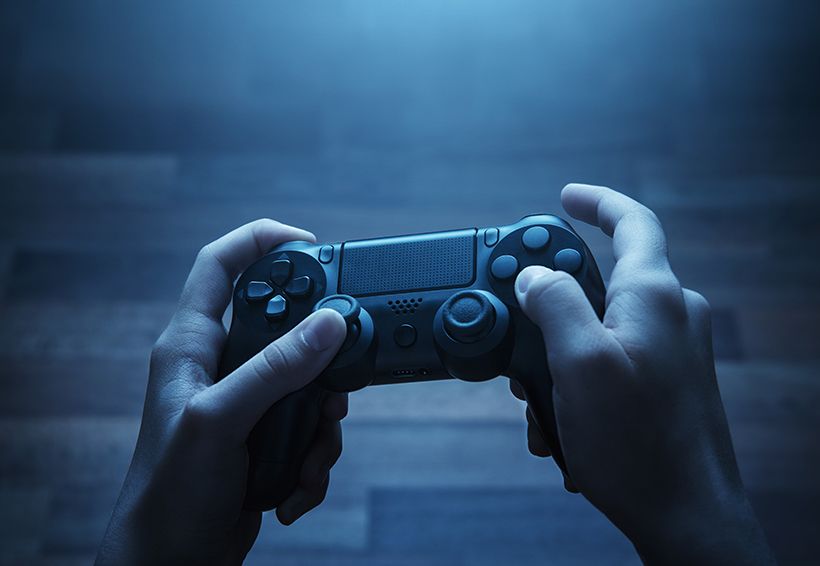
The Games:
NeuroSage Therapy games are more than just fun activities—they're carefully designed exercises that target specific cognitive functions and provide a range of benefits:
Memory Games: These games challenge your memory, helping you remember and recall information better. They might involve matching patterns or remembering sequences.
Problem-Solving Challenges: Games that require problem-solving skills, like puzzles or logic games, stimulate your brain to think critically and find solutions.
Attention and Focus Activities: Activities designed to enhance focus and attention involve tasks that require concentration and quick responses, like following patterns or identifying specific items.
Coordination and Motor Skills: Some games focus on improving coordination and motor skills through interactive exercises, like hand-eye coordination games or activities involving precise movements.
Relaxation and Stress Reduction: Certain games are aimed at relaxation, incorporating soothing visuals or calming exercises to reduce stress and promote relaxation.
Personalized Programs: Therapists tailor these games to address specific cognitive goals or challenges for each individual, ensuring that the exercises align with personal needs and abilities.
Overall, these games are like a gym for your brain, targeting different areas to improve memory, problem-solving, focus, coordination, and even relaxation. They're not just entertaining; they're purposefully designed to stimulate and enhance cognitive functions for better overall mental fitness.

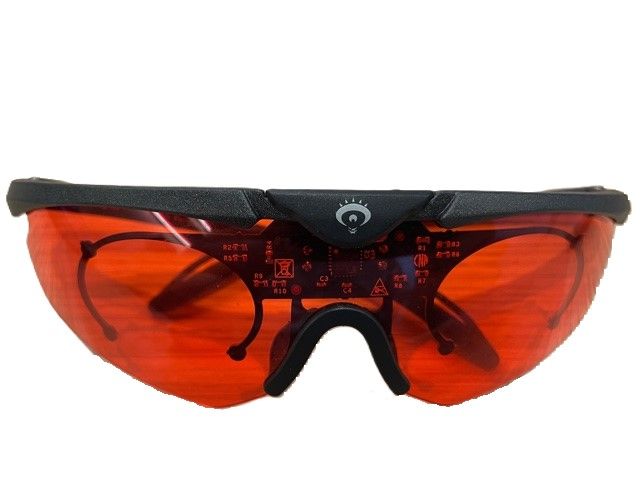
The Glasses:
Red or Blue, which one are you?
In NeuroSage Therapy, flashing lights and colored glasses, specifically blue and red, are utilized as sensory stimulations to target and engage different areas of the brain:
Flashing Lights: Controlled and specific patterns of flashing lights are used as visual stimulations. These patterns, presented at particular frequencies, aim to stimulate neural pathways associated with various cognitive functions. This stimulation is believed to have an impact on brain activity, potentially influencing attention, memory, and other cognitive processes. It's thought to encourage the brain to adapt and enhance its function over time.
Colored Glasses (Blue and Red): The blue and red-tinted glasses used in NeuroSage Therapy are a form of chromotherapy or color therapy. Each color is believed to have distinct effects on the brain and perception. Blue-tinted glasses are associated with a calming effect, promoting relaxation and reducing stress. Meanwhile, red-tinted glasses are thought to be stimulating, increasing alertness and potentially enhancing cognitive performance.
When combined, these visual stimulations—flashing lights and colored glasses—aim to provide a multisensory experience that targets different areas of the brain. By manipulating visual input in specific ways, the therapy intends to trigger neural responses and potentially enhance cognitive functions, relaxation, or alertness, depending on the specific protocols and goals of the therapy session.
It's important to note that while these techniques are used in therapeutic settings, their scientific evidence and effectiveness in specific contexts might vary, and further research is often ongoing to better understand their impacts on cognitive function and brain activity.
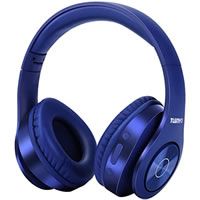
The HeadPhones:
These help the user focus on the targeted stimulation from the Neurosage program.
Ergonomic Design
Crisp, Powerful sound
Soft Ear Cushions for Comfort

Aromatherapy:
Peppermint and lavender oils, when used in NeuroSage Therapy, are part of an approach known as aromatherapy. Here's how they're typically incorporated:
- Peppermint Oil: Peppermint oil is known for its invigorating and stimulating properties. When used in aromatherapy, it can promote alertness, improve focus, and provide a sense of energy. The scent of peppermint is often associated with increased mental clarity and enhanced cognitive performance.
- Lavender Oil: Lavender oil is renowned for its calming and relaxing effects. It's often used to induce a sense of tranquility, reduce stress, and promote relaxation. The scent of lavender is associated with improved sleep quality, reduced anxiety, and a calming effect on the mind.
During NeuroSage Therapy sessions, these essential oils might be diffused or applied in a controlled manner to provide an olfactory stimulus, engaging the sense of smell. The goal is to create a sensory environment that complements the therapy's objectives, such as promoting relaxation, reducing stress, enhancing focus, or influencing cognitive responses.
The use of essential oils like peppermint and lavender is believed to work in conjunction with other sensory stimulations in NeuroSage Therapy, aiming to create a holistic experience that influences both physical and mental states. However, it's important to note that individual responses to aromatherapy can vary, and while these oils are used in therapeutic settings, their specific impacts may differ among individuals.

Laser and Light Therapy:
As part of Neuro Sage Therapy, we utilize advanced laser and light therapy, also referred to as photobiomodulation and photoneuromodulation. This therapeutic approach has undergone thorough research since the 1960s, consistently proving its safety and remarkable efficacy in expediting recovery from diverse health issues.
Laser therapy utilizes low-level laser light to prompt healing and alleviate pain and inflammation without invasive procedures. Its effectiveness spans various conditions, including chronic pain, arthritis, sports injuries, fibromyalgia, neuropathy, among others.
Our team of specialists collaborates closely with each patient to tailor a treatment plan suited to their unique condition. Employing cutting-edge laser technology, we administer precise and targeted therapy to ensure everyone receives personalized care.

Remember, the brain is like a muscle. Just as it takes time to see real change and results in any muscle, the same applies to the brain. Dr. Starkman, our expert, crafts personalized treatment plans that, over time, yield incredible results.
So, if you're an athlete seeking enhancement, someone dealing with ailments, or simply aiming to optimize your brain's potential, it's time to explore NeuroSage Therapy. Trust me, you'll be amazed at the transformation it brings.
Why is NeuroSage so great?
Holistic Approach: It takes a comprehensive approach, engaging multiple senses and cognitive functions to address various aspects of mental and physical well-being.
Personalization: Tailored programs are crafted to suit individual needs, ensuring that therapy aligns with specific goals and challenges.
Diverse Benefits: It's not just about one thing! NeuroSage offers a wide array of potential benefits, from pain management to cognitive enhancement, catering to different needs.
Innovation: By incorporating technology and sensory stimulations, like flashing lights, videos, and essential oils, it stays on the cutting edge of therapeutic approaches.
Therapist-Guided: Professionals guide the process, monitoring progress and adjusting treatments to optimize outcomes.
Potential for Various Conditions: Its versatility means it has potential benefits for a broad spectrum of conditions, from neurological disorders to pain management and beyond.
Evidence-Informed: While ongoing research informs its practices, the therapy adapts to incorporate new findings and advancements in the field.
Focused on Growth: NeuroSage recognizes the brain's adaptability and aims not just for recovery but for improvement and growth, harnessing the brain's potential.




